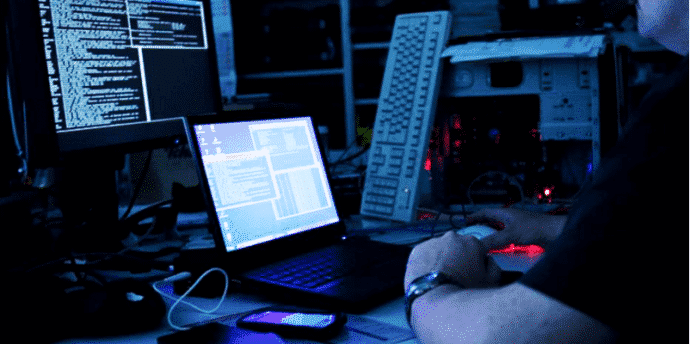These hackers made some daring hack attacks and never got caught
Hacking was a term that originated in 1990s and is associated with the unauthorized use of computer and network resources. By definition, hacking is the practice of altering the features of a system, to accomplish a goal which is not in scope of the purpose of its creation.
Hacking is more commonly used in context of “Computer Hacking” where threat is posed to security of the computer and other resources. In addition, hacking has few other forms which are less known and talked about .e.g. brain hacking, phone hacking etc.
“Hacker” was a term used to denote a skilled programmer who had competency in machine code and operating systems. Such individuals were proficient in solving unsatisfactory problems and often interpreted competitors’ code to work as intelligence agents for small software companies. While many others do it for monetary gain or Lulz, while some do it in protest.
We take a look at such mysterious hack attacks where the perpetrator has neither been identified or caught.
WANK Worm
WANK stands for Worms against Nuclear killers and its authors are thought to first hacktivists who made a worm as a statement. WANK worm infected the NASA’s DEC VMS computers in 1989 over the DECnet in Maryland. It was written in DIGITAL Command Language. The worm executed a ran a ASCII banner on the NASA computers to protest against plutonium-fueled, Jupiter-bound Galileo probe.
Though NASA managed to clean up its systems, it supposedly cost them half of a million dollars in time and resources.The WANK worm hackers were never identified while some that the worm was created by Melbourne-based hackers, the first to be created by an Australian or Australians. The federal police of Melbourne thought the worm was created by two hackers who used the names Electron and Phoenix. Wikileaks founder, Julian Assange was also believed to be behind the WANK worm, however, it was never proved.
UK’s Skynet military satellite hack
In February 1999, an unknown group of hackers managed to hijack a Ministry of Defence Skynet military satellite. The unidentified hackers were traced to Southern England but were never caught. The hackers managed to reprogram the control system before their exploit was discovered. UK’s military authorities alleged that the hack was done to gain information as to military plans. UK’s Scotland Yard’s Computer Crimes Unit and the U.S. Air Force thoroughly investigated the case but failed to identify the hackers nor was their ultimate aim known.
Anti-DRM Hack
This is one hack attack which millions of users appreciated and the unidentified hacker was heralded as a hero. The case was Windows DRM and hack was meant to strip its DRM and give users free access to songs and videos. The hacker who was known as Beale Screamer had made a program FreeMe which became a overnight hit. FreeMe allowed users to remove digital rights management security from music and video files, freeing them for viewership across the world.
Screamer was never identified or caught and to this day some organizations continue to search for him while many others regard him as a hero.
Hackers stole Military Source Code
This cannot be termed as a good deed hack because the hacked object involved source code that controlled missile-guidance systems. In winter of 2000, a hacker broke into government-contracted Exigent Software Technology and stole two third of the source code of Exigent’s OS/COMET software which runs missile and satellite guidance system.
The hack attack which occurred in Naval Research Lab in Washington was detected before the full code was stolen. Without the full code, the hackers were not able to do any real damage. However, it is still now known what the hackers intended to do with this code. Authorities identified the hacker as “Leaf” and traced his trail to the University of Kaiserslautern in Germany, but it ended there.
CDUniverse hack
A malevolent computer hacker claims to have pulled off the greatest information technology heist in history after temporarily posting credit-card numbers stolen from a large US e-commerce firm.
It is thought to be a blackmail scheme which went horribly wrong for the hacker. The hacker who is only known as Maxus, apparently demanded $100,000 from CDUniverse for in exchange for destroying the data. Maxus had earlier hacked into CDUniverse website and stolen a wealth of information from its servers.
When the company refused to copy to his ransom demands, Maxim responded by leaking 300,000 credit card numbers on Website entitled “The Maxus Credit Card Pipeline.” Maxus was never identified after being traced to Eastern Europe.
ApplyYourself hack
ApplyYourself was an automated application system developed to help students find a good MBA college for themselves. However, in March, 2006, an unknown hacker were able to crack the software and track his status. Happy with his exploit, he shared publically for the students on Business Week’s online forum.
Dozens of top business schools, including Harvard and Stanford, saw applicants exploiting the hack in order to track their application statuses. The unknown hacker was never identified and the students who used the hack were rejected by the business schools.
Such weird hack attack have been happening since computers were first developed and Internet became a phenomenon. While these hacks are known, there are many such mysterious hack attacks which will never see the light of day.
